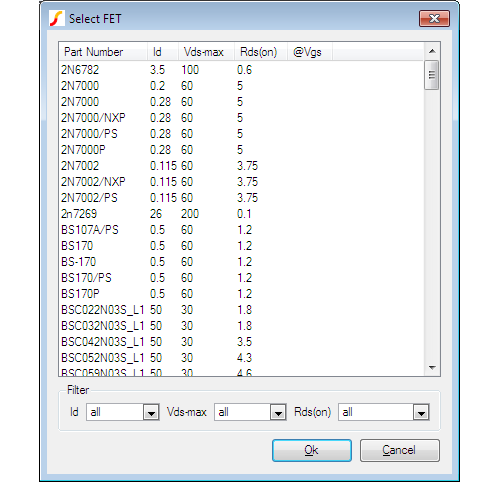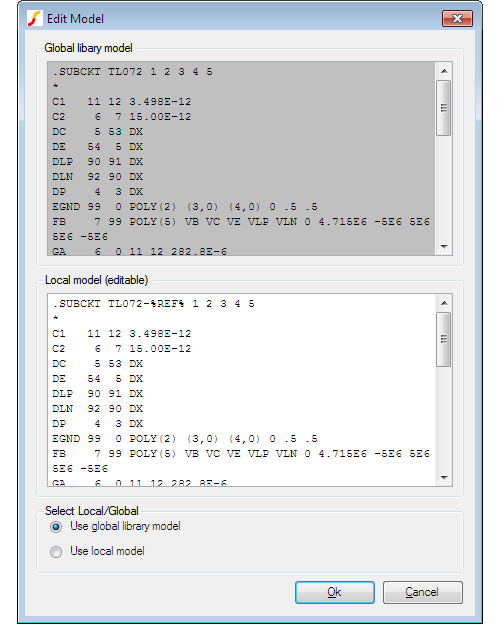

|
In this Topic Hide
Numbered parts - that is parts that are located in the model library - may be accessed via the Model Library Browser. Select menu to open it.

Select the appropriate category on the left then the part number on the right. The picture above shows what you would see if selecting an IRF530 from the NMOS category. If you are not sure what category the part is in, select the '* All Devices *' category which you will find at the bottom of the category list.
If you are looking for a part that you installed (as opposed to a part supplied with SIMetrix) then you will find it in the '* All User Models *' category as well as the '* All Devices *' category. If installed within the last 30 days, you will also find it under '* Recently Added Models *'.
To reduce the number of devices displayed to a manageable level, you can specify a filter. You can use the wild-cards '*' and '?' here. '*' will match 1 or more of any character while '?' will match any single character. So, '*' on its own will match any string and so all devices will be displayed. But 'IRF*' will display any device that starts with the three letters 'IRF'. 'IRF???' will display any device beginning with IRF and followed by three and only three characters.
For some classes of part, you can select a model based on a desired specification. For example, if you are looking for an n-channel power FET with a 200V max Vds and Rds(on) less than 0.5Ohms, you can enter this specification and obtain a list of parts that meet it. Currently, devices supported for this scheme include power FETs, diodes and Zener diodes. This feature is available in both SIMetrix and SIMPLIS modes.
To use this method of selecting a device, proceed as follows:

All parts selected using the model library browser as described above are defined using a model located in the global model library. You can view this model using the right click popup menu
. This will display something like the following dialog box:

You may subsequently swap between the global and local models at any time. The local model is stored in the schematic instance as a property and will continue to be available even if you select the global model at some time. This allows you to freely swap between the library model and your own modified version.
Note that only models defined in the global library may be viewed and edited in this way. Models defined locally in the F11 window or models defined using .lib or .inc may not currently be viewed or edited.
|